Are you looking for math problem solving activities that are fun and engaging? Then continue reading on! I will be sharing with you 9 fun math problem solving activities that you can use in your class.
What are mathematics problem-solving activities?
According to the National Council Of Teachers Of Mathematics, Mathematics problem solving refers to mathematical tasks that have the potential to provide intellectual challenges for enhancing students’ mathematical understanding and development.
Problem-solving is a skill that we try to teach to our students in math class. A lot of times we will use word problems as problem-solving tasks. But there are actually more activities that do not involve story problems.
You can use these problem-solving activities as a lesson themselves, math starters, review, fast finishers, with small groups or a large group.
9 Fun Math Problem Solving Activities
Students often dread doing math word problems and tasks that are challenging. And forcing them down their throat is not the long-term solution as it can lead to math anxiety.
There must be a better way!
And the solution is…to find a fun way to tackle them!
Here is a list of 9 different ways to do problem-solving tasks. And I even gave some educational materials that you can grab if you are interested to use them in your class.
- Online Word Problems Practice
- Short Video
- Non-Routine Word Problems
- Hands-On Math Problem Solving Activities
- Math Puzzles
- Mystery Puzzles
- Scavenger Hunt
- Digital Treasure Hunt
- Escape Room
1) Online Word Problems Practice
Children love to go online. So by giving them a chance to play with the tablet or computer, they will already be more interested in the task on hand than usual.
Consider the digital interactive task cards available on the Boom Learning site. They are often self-checking and require no preparation. This means they do not require much time from you and students can accomplish the mathematical practice independently.
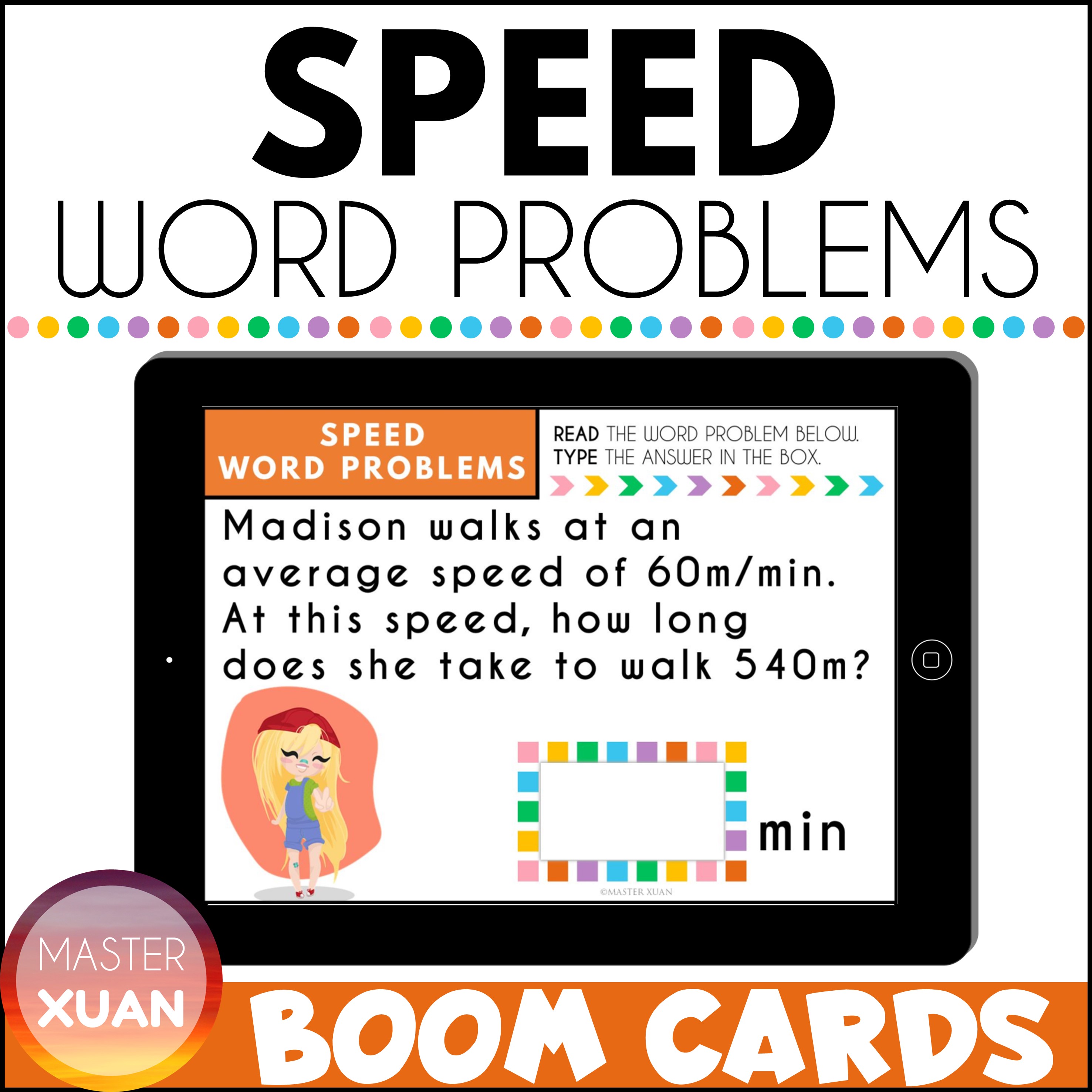
Furthermore, if you assign the Boom Cards to students, you can look through the reports of your student’s progress and results.
These digital versions of word problems not only add a bit more fun to them but also help to develop a deeper understanding of mathematical concepts.
2) Short Video
Video provides a multisensory experience that helps to capture students’ attention. It is also great for memory retention and can enhance their learning experience.
A) Show short videos that help them build their problem-solving skills.
For example, matchstick puzzle examples.

Related read: 3 Free Math Puzzles With Answer For You To Enjoy This Summer
B) Show them videos that teach them math skills or review math skills.
This can be just a short review or a math hook for more math practice.
Related read: 5 Hooks For Math Lessons That Will Engage Your Students Easily & Quickly
C) Show them a real-life problem and ask them to solve it using math.
Linking math to a real-life issue can always help to make math lessons more exciting.
You can show them an existing issue and let them brainstorm on how to solve them. How can we use our math knowledge or other knowledge to solve it? (Sounds familiar? Consider project-based learning.)
Or you can show how real-life problems were solved due to our knowledge of math. Will they be the next mathematicians that make an impact on the world?
3) Non-Routine Word Problems
What is more challenging and interesting than word problems? It’s non-routine word problems!
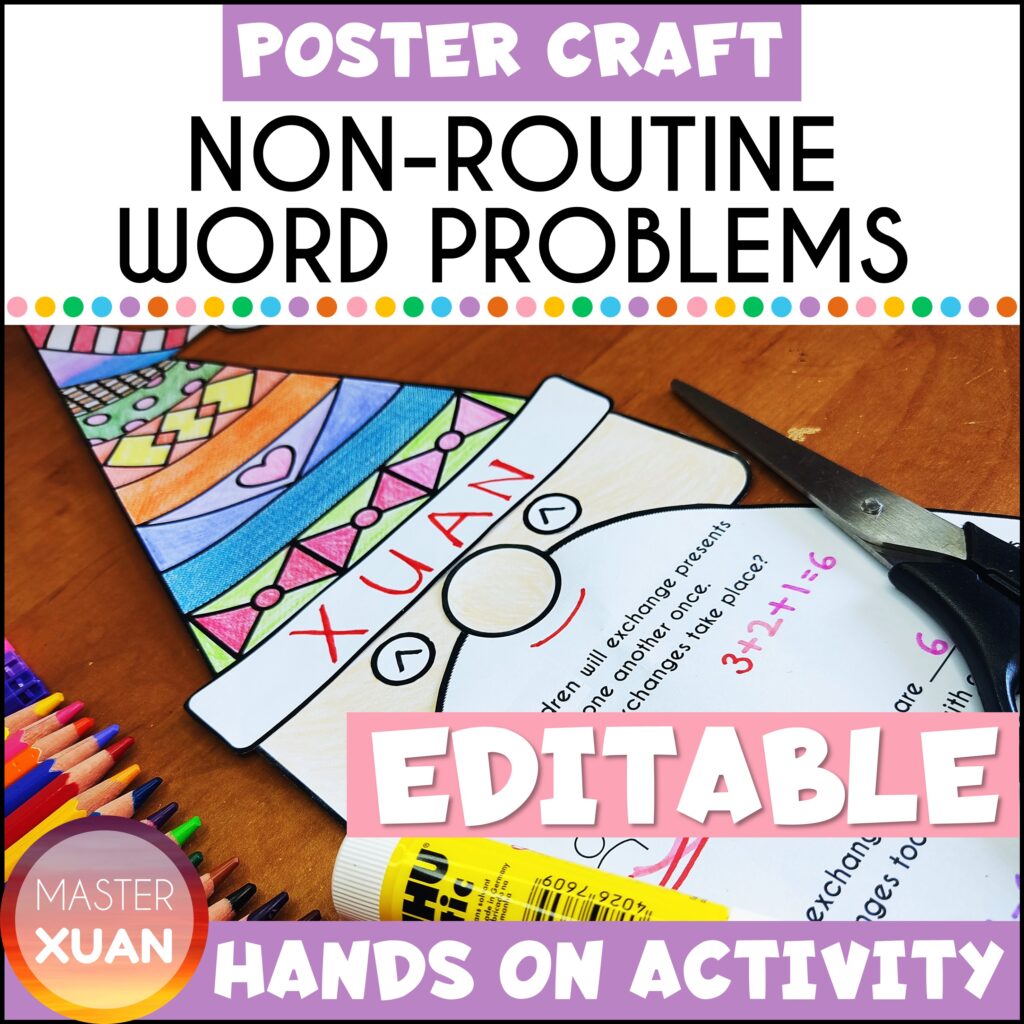
They can be tricky and require different problem-solving strategies than the usual problem-solving approach.
It requires some critical thinking to get to the correct answer. Sometimes there may also be different solutions to these challenging problems.
4) Hands-On Math Problem Solving Activities
By incorporating hands-on activities with word problems, word problems look more attractive now!
Furthermore, kinesthetic learners will benefit greatly from math craft or math craftivity. Hands-on activities are engaging.
Be aware of the suitability of the craft as young children or older students may require different sets of activities. One way to differentiate is by grade level.
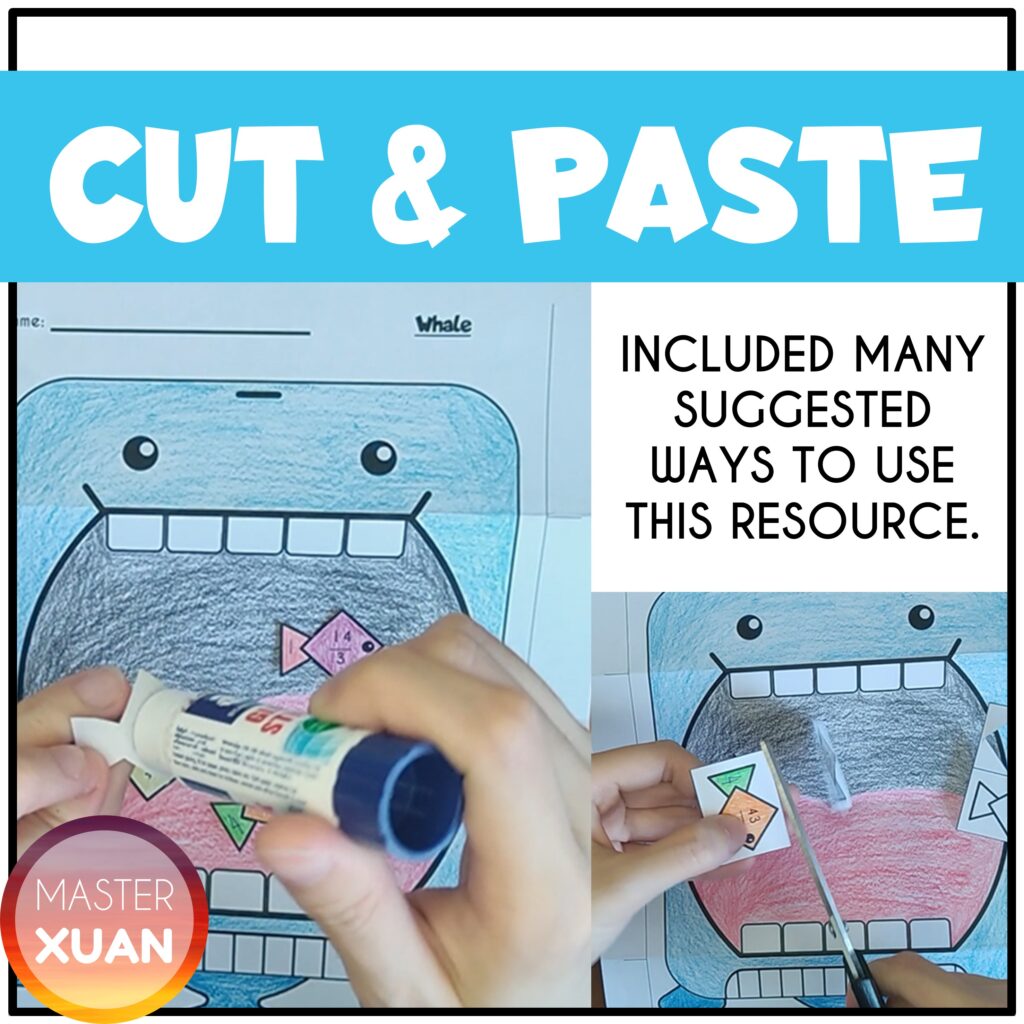
Here’s a freebie for you to try it out.
5) Math Puzzles
There are many types of math puzzles. For example, logic puzzles, sudoku puzzles, and magic squares.
These math puzzles can help build logical reasoning.
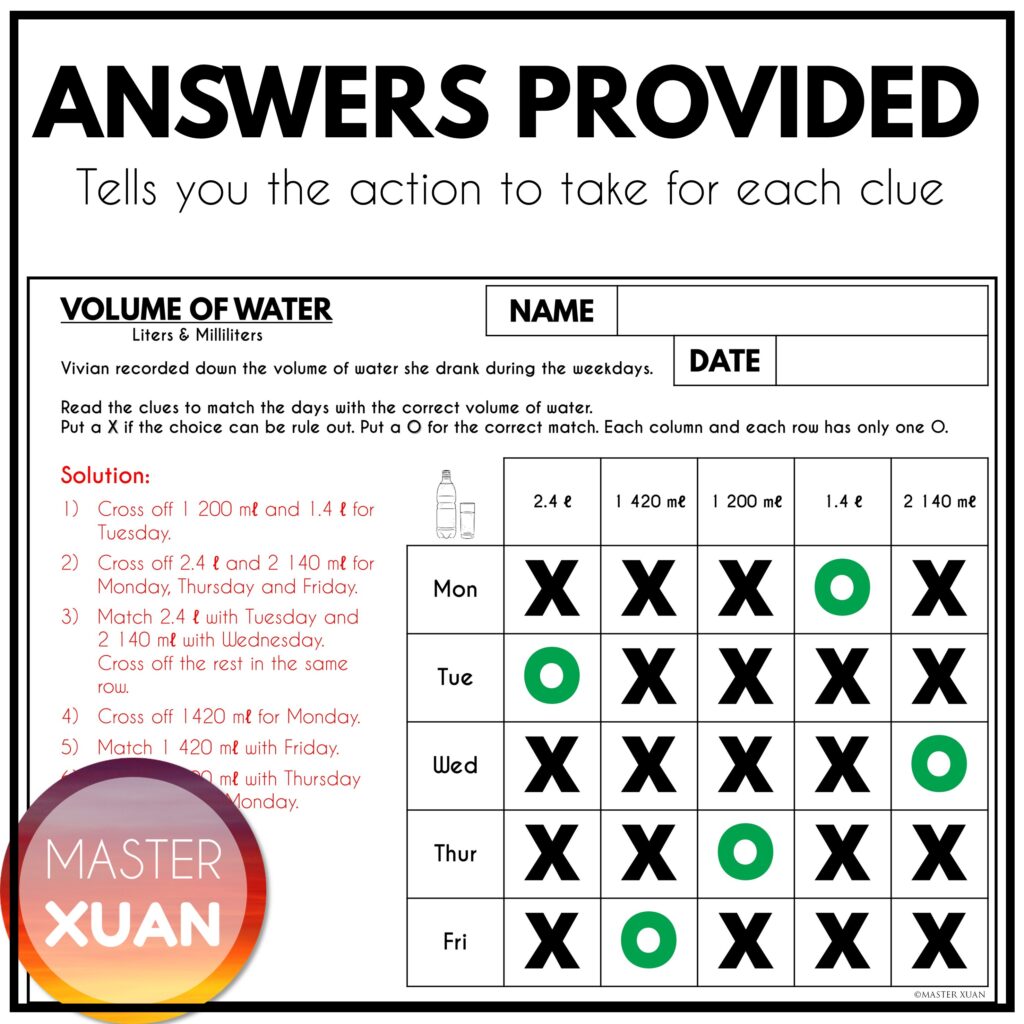
6) Mystery Puzzles
Students get to practice rigorous word problems and develop a deep conceptual understanding with these mystery puzzles!
Students now have to solve word problems to know which are the correct clues.
Furthermore, these worksheets are differentiated which means students of different standards can also utilize them. There are different culprits for the different sets which means students can do all of them if needed.
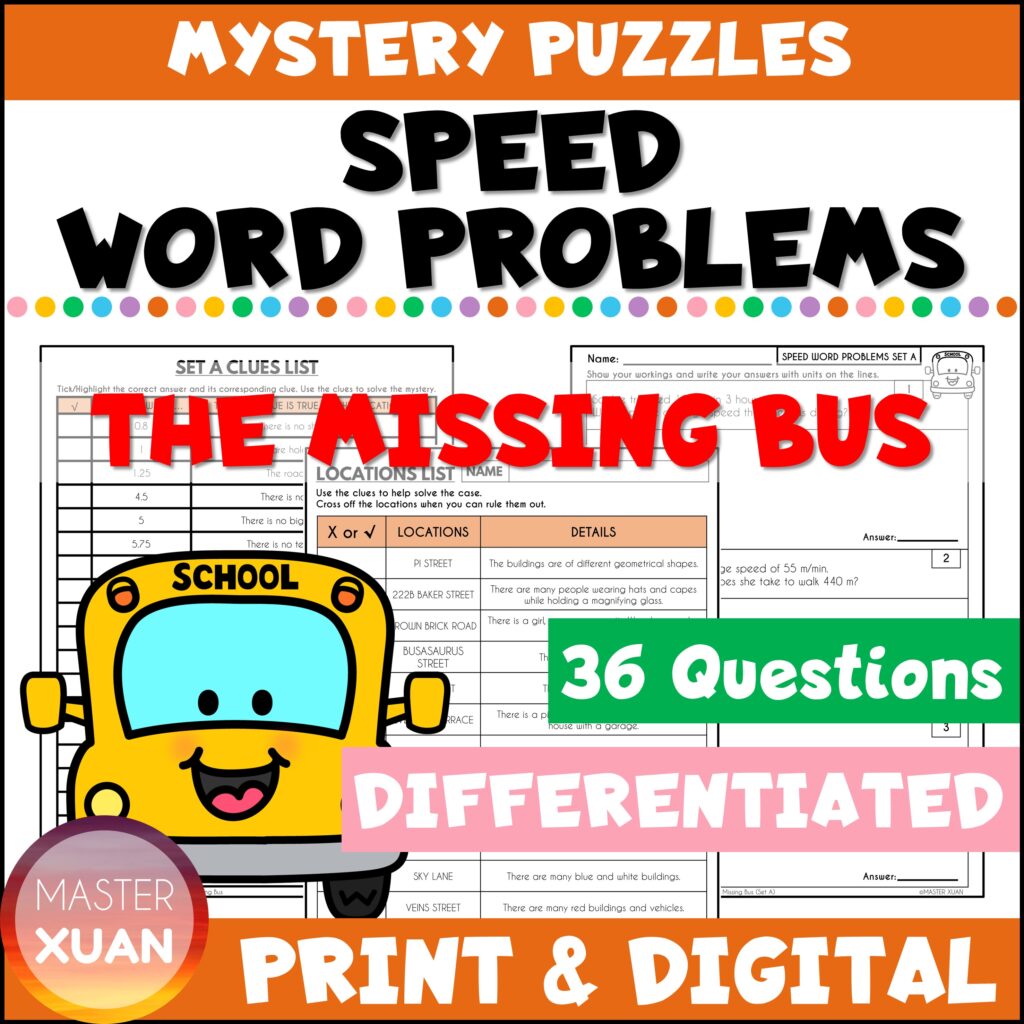
7) Scavenger Hunt
Scavenger hunts are great movement activities for students. However, to incorporate word problems with a scavenger hunt, I would prefer to use them for lower elementary students.
That’s because word problems for lower grades are usually shorter and require less time to solve.
After all, if students have to stand for very long at a spot, it lowers the fun factors of the scavenger hunts.
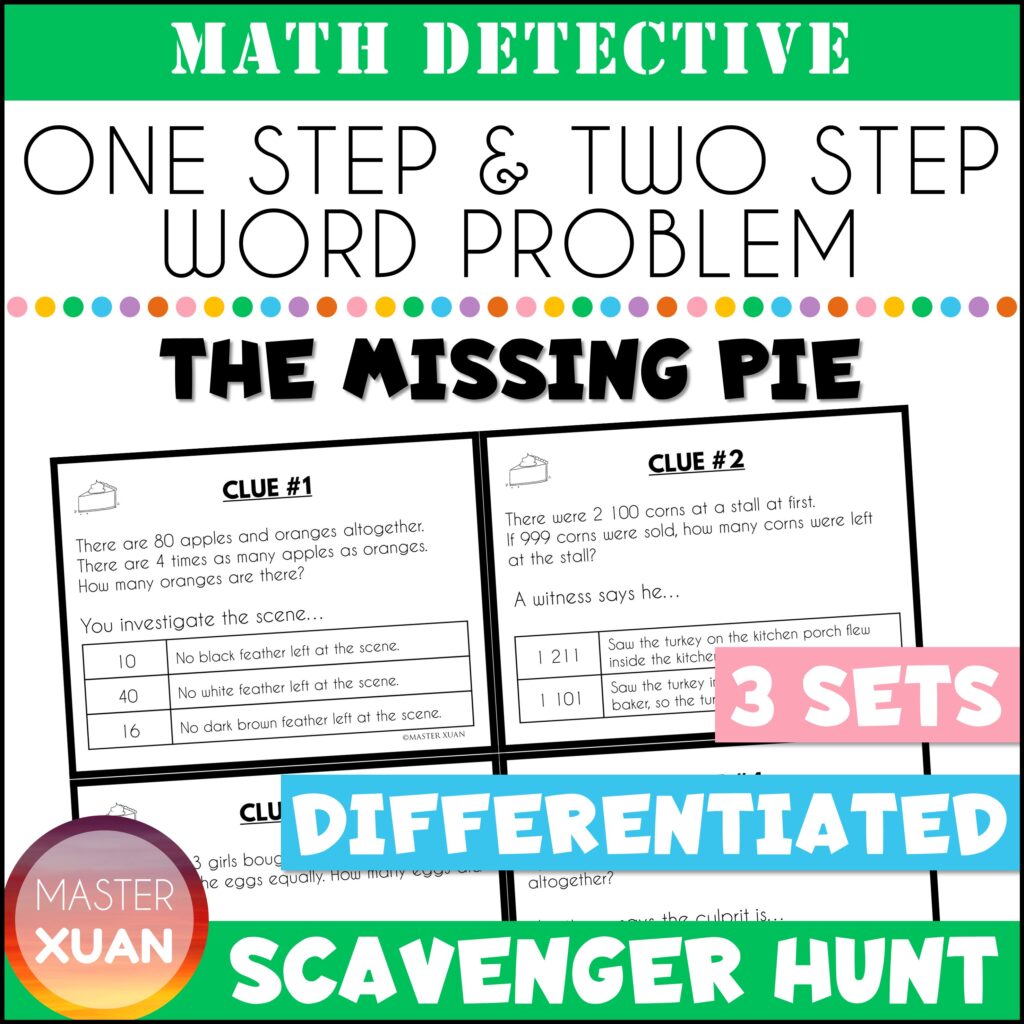
8) Digital Treasure Hunt
Treasure hunt is similar to a scavenger hunt. But what I have in mind for you is a digital treasure hunt that requires students to solve word problems prior to “digging” the spot.
These digital versions of treasure hunting help you save some hassle but still engage students.
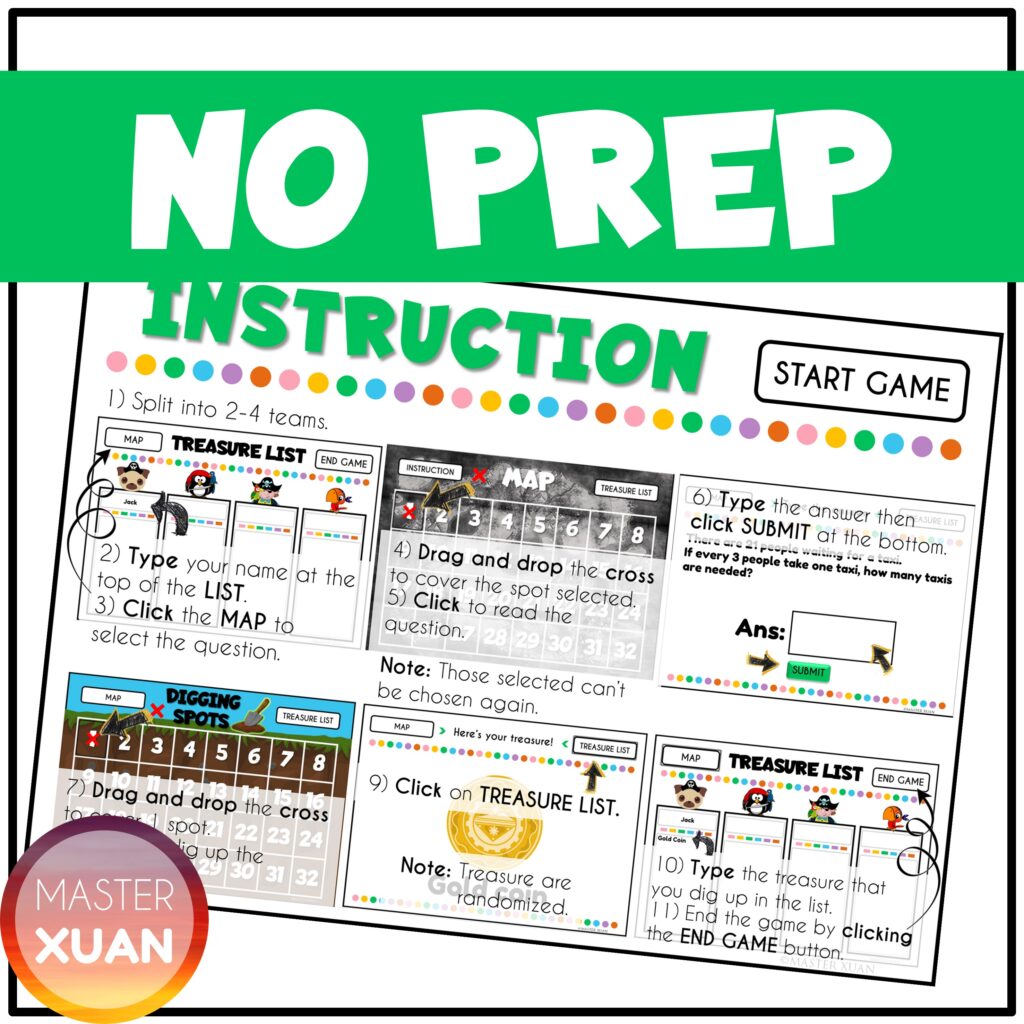
9) Escape Room
Escape room is great for practicing problem solving skills as it usually includes a variety of problems and puzzles. The types of problems will vary, depending on the creator. So choose the ones that suit your students’ needs.
Some elaborate escape rooms let students practice decision-making skills, collaboration skills, spatial reasoning, logical reasoning, deductive reasoning, and/or a variety of mathematical knowledge.
Of course, we can always stick to the less fussy way and make students solve logic problems.

Final Thoughts
To make math problem-solving activity fun and engaging, the questions must be either interesting enough or within the student’s ability.
The fun part of any puzzle is always those that we can solve if we think harder or out of the box.
If it is too hard, students will get discouraged very soon and all of us will not meet our goals.
However, we also need to develop students’ growth mindset so that even if they can’t solve complex tasks, they will have the correct mindset facing their “failure”.
Hopefully, by using these ideas and tips mentioned above, your class will start looking forward to problem-solving activities. And we can also start looking forward to an increase in their math abilities and test scores!
Here are some pins that you can save to bookmark this post. Save them to your Pinterest Board now! ↓
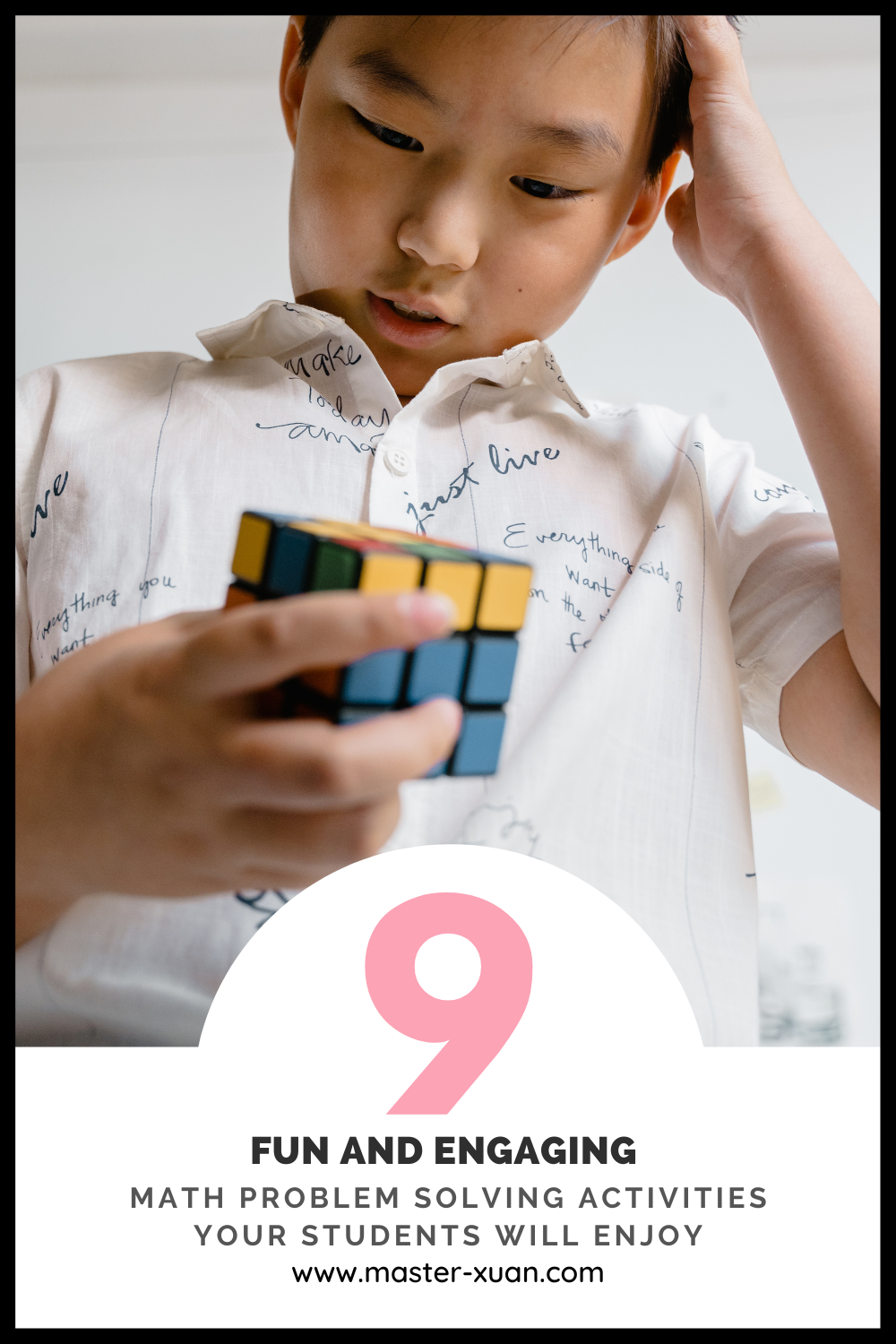
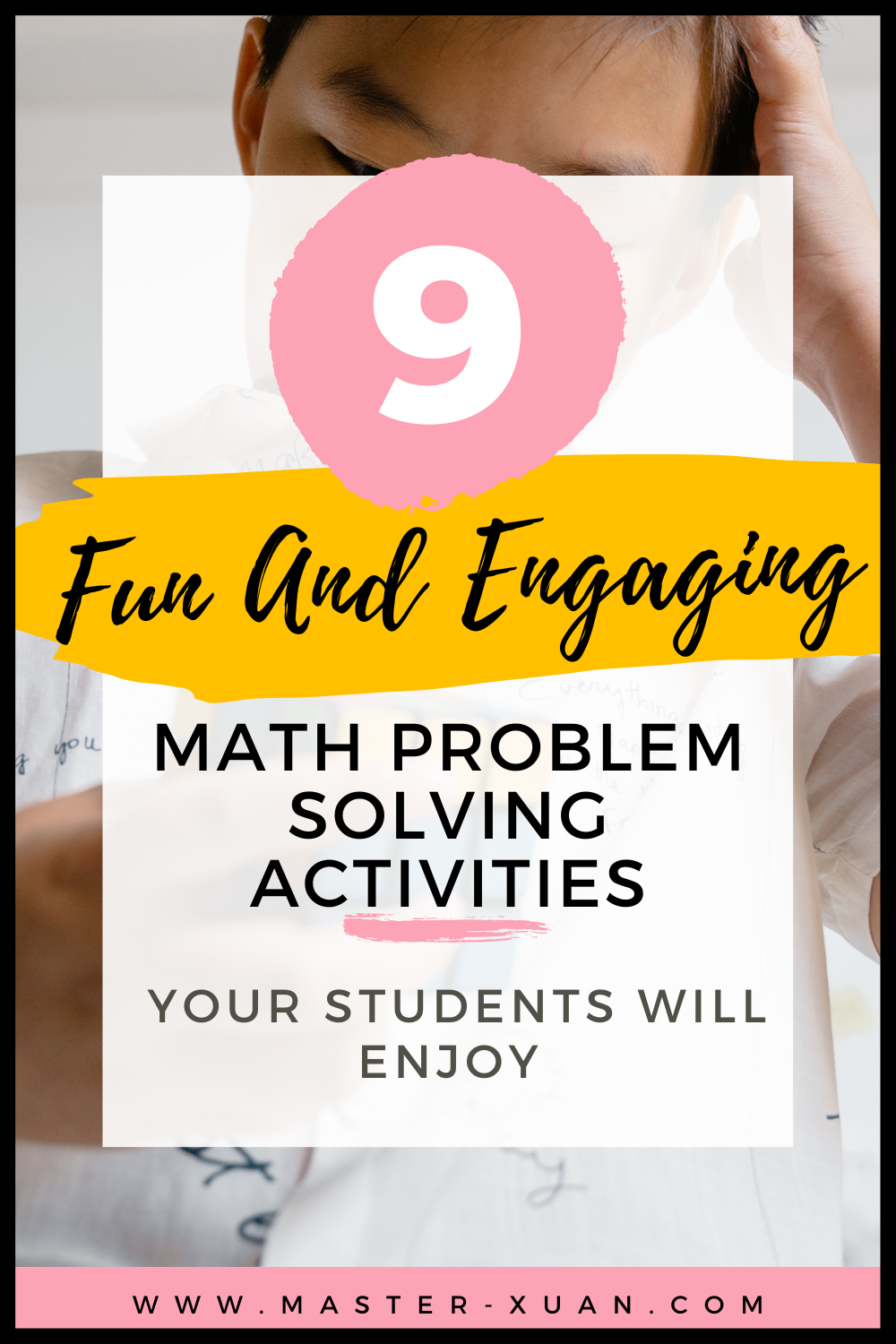
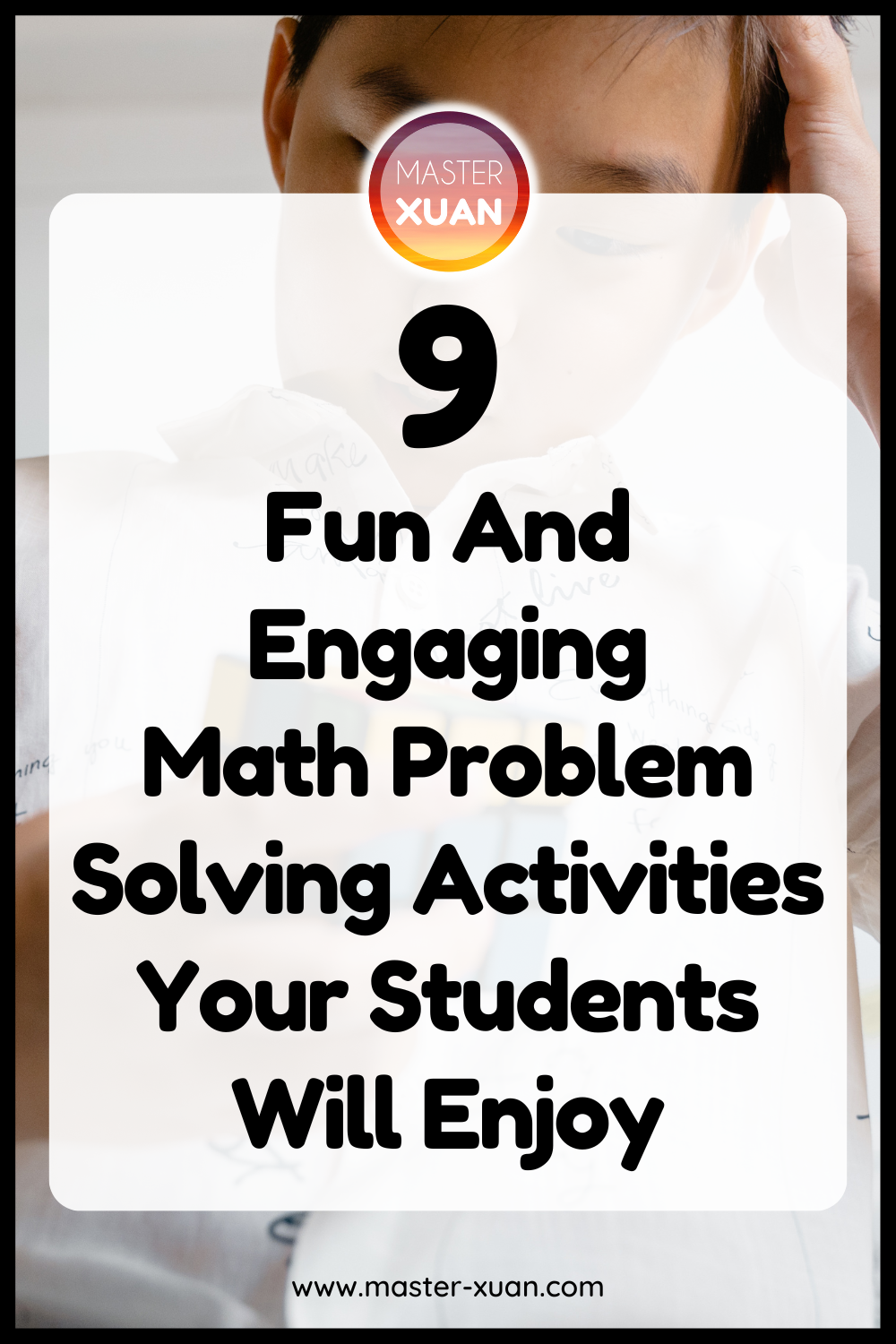

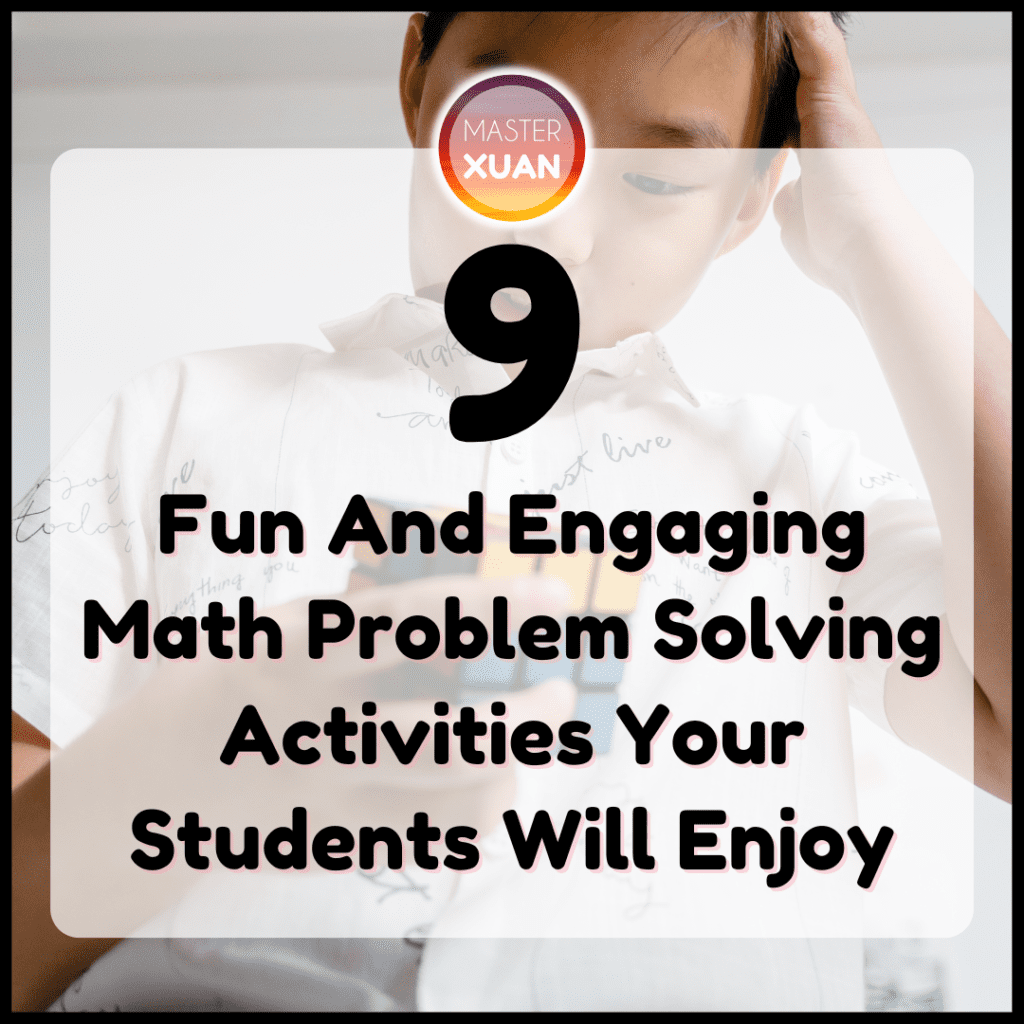
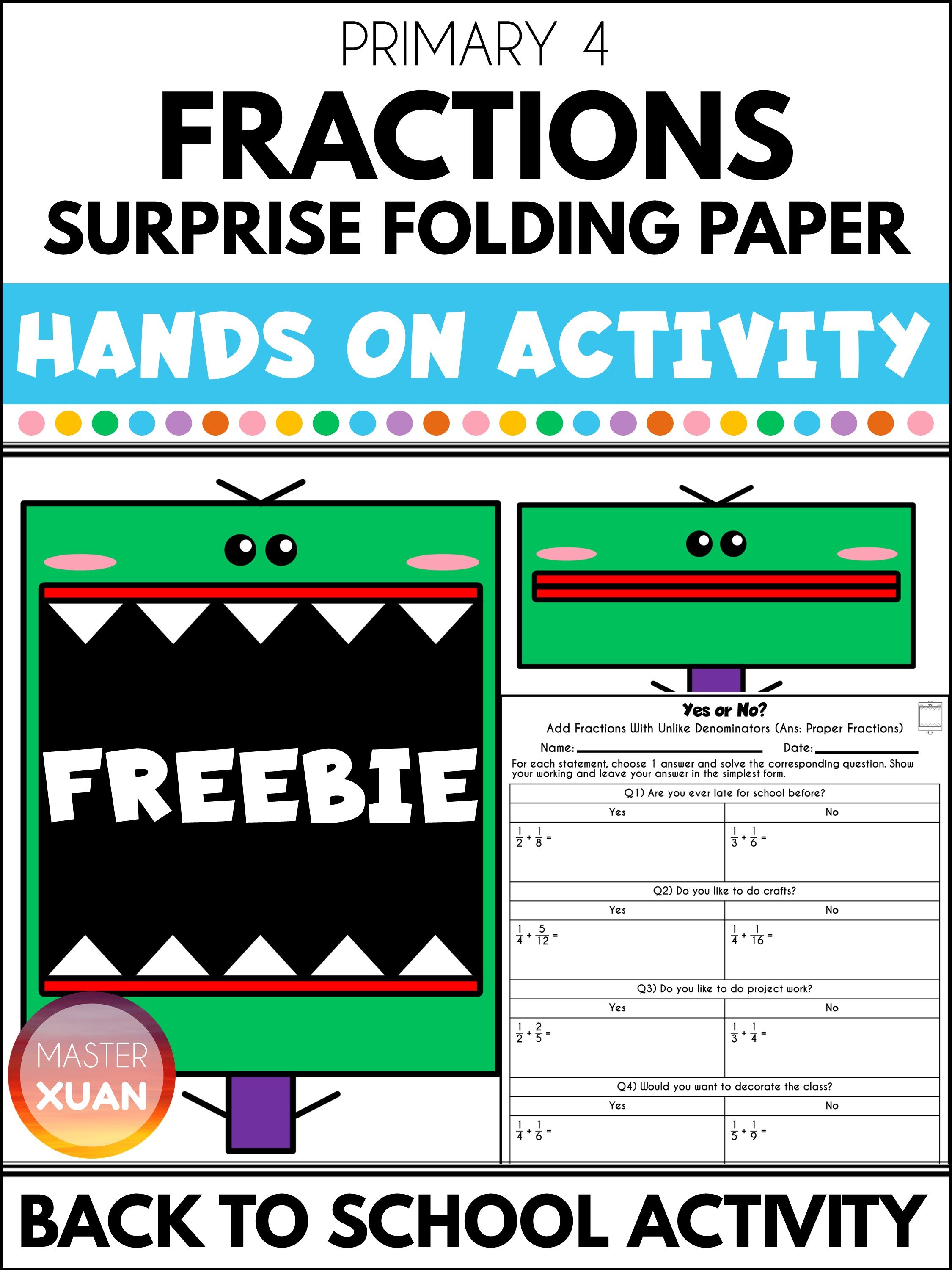
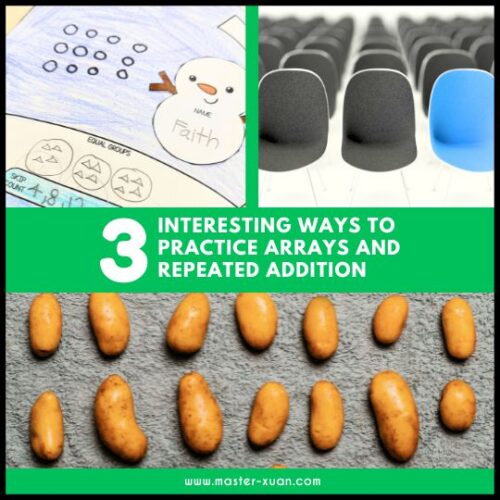

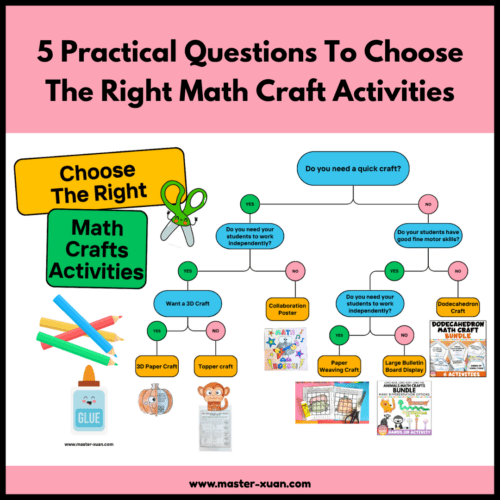
I love how you’ve combined creativity and critical thinking in these activities. These math problem-solving activities are a fantastic way to engage students in learning!
Thank you for your kind words! Have a great day!